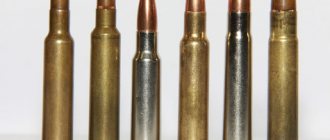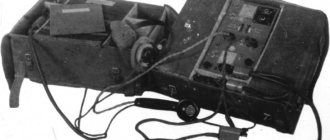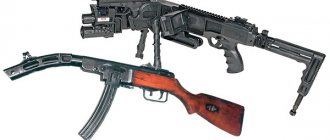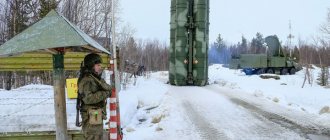Telecommunication aspects of SCS design. Part 1
Goals, objectives and principles of performing calculations in the telecommunications phase
The main task solved at the telecommunications design phase is to calculate the number of components required to create transmission paths for electrical and optical signals of the SCS.
In the vast majority of cases, any calculation of electrical and optical characteristics is not performed, since the specified level of parameters of the generated paths is guaranteed by the used element base, compliance with the requirements of standards and rules for installing SCS. As part of the telecommunications design phase, using its results, the calculation of installation and additional components (structures, cable ducts, marking elements, fasteners, etc.) is also carried out. This calculation is usually separated into a separate stage.
To formalize the design process of the cable wiring itself, it is advisable to use a slightly different and smaller division of the SCS and equipment directly interacting with it from the ISO/IEC 11801 standard into separate subsystems:
- workplace subsystem;
- horizontal subsystem;
- trunk subsystems (subsystems of internal or external highways);
- switching equipment of the administrative subsystem;
- patching and crossover cords of the administrative subsystem.
The design of individual cabling subsystems is carried out sequentially. The recommended sequence of their development coincides with the specified order. Thus, the design procedure is carried out in accordance with the principle “from particular to general”, and the structure of the SCS is largely determined by the number of jobs organized with its help.
It is advisable to present the calculation results for each of the subsystems in tabular form. The resulting table data is used as initial information for the design of the following subsystems. At the final design stage, equipment specifications are prepared using these tables.
Workplace subsystem design
The main task of this design stage is to develop, coordinate and approve a plan for the location of information and power outlets, as well as determine the category of electrical outlet modules and the type of optical connector outlets, the type and number of terminal cords, adapters, and adapters.
Information sockets (IR), which are installed at workplaces, are designed to connect workstations, telephones, fax machines, modems, etc. The presence and number of sockets of each type, as well as their configuration with modules, are determined in accordance with customer requirements.
According to the ISO/IEC 11801 standard, an IR with two or more socket modules should be installed at each workplace. At least one IR module must be connected to Category 3 or higher cable. The remaining modules serve Category 5 or optical cable. In order to ensure the universality of the cable system, it is recommended to use IR with modules of category 5. The bulk of electrical products included in modern SCS, in their parameters, ensure compliance with the requirements of category 5e (according to the American standard TIA/EIA-568-B) and its equivalent category 5 according to ISO/IEC 11801 as amended 2000
Fig 1. An example of connecting a category 5e or 6 SCS with two-port IR of an additional high-speed device without changing the initial level of information support: a) classic configuration; b) configuration after connecting an additional high-speed device
Installing an IR with two socket modules of category no lower than 5e at a workplace significantly increases the operational flexibility of the created cable system. As an example in Fig. 1 shows a diagram of how to connect an additional high-speed device (for example, a network printer or graphic workstation) to the network without reducing the level of other services in the field of information support.
In some cases, due to local conditions and the specifics of the required configuration of workplaces, at the insistence of the customer, deviation from the recommendations of the standards is permissible, both in the direction of changing the number of socket modules and their category. At the same time, under no circumstances is it recommended to downgrade the capacity of the element base used in the process of constructing an SCS. This rule should be followed most strictly in relation to elements of a permanent or permanent line and, in particular, in relation to cable. This is explained by the fact that downgrading the element base does not bring any noticeable financial gain and does not affect the speed of implementation of cable wiring, but leads to a significant deterioration in the parameters of the system, making it obsolete even before commissioning. In addition, it is possible to switch to socket modules of a higher category with the same fastening mechanism.
Fig. 2. Moving the IR along the box if there is a reserve length of the horizontal cable
In a situation where the customer puts forward a requirement to use single IRs at workplaces, it is recommended, if possible, to group them in pairs or install dual-port IRs with one socket module. The first solution provides a standardized SCS structure and significantly facilitates its further modernization and deployment to full-scale when such a need arises. The second solution does not provide a standardized structure, however, it makes the transition to it not so difficult, provided that the remaining elements of the horizontal subsystem infrastructure are designed for full capacity.
In the case of using IR with an optical interface at workplaces, the problem of choosing the type of optical connector socket is additionally solved. It is known that classic designs of optical connectors (SC, ST, etc.) are half as good as the electrical modular connector in terms of port density. The desire to overcome this drawback led to the creation of small-sized, so-called SFF connectors. The following SFF connectors have gained the most popularity in the user part of SCS: MT-RJ, VF-45 and Opti-Jack. Products of this type are not officially approved for use by the international standard ISO/IEC 11801 as amended in 2000. The American standard TIA/EIA-568-B.1 allows the use of SFF connectors and does not specify their type.
Distribution of IR among individual premises
The most important operation performed in the process of designing a workplace subsystem is the distribution of IR among workspaces. The most appropriate is an even distribution over the area of the room. Let us give an estimate of the area of office space that can accommodate one user’s workstation.
Domestic building codes SNiP 2.09.04-87, paragraph 3.2, recommend allocating a minimum of 4 m2 of space per workplace for a management employee and a minimum of 6 m2 for one design bureau employee. The Sanitary Rules SanPiN 2.2.2 (clause 4.4) contains a similar requirement to allocate 6 m2 for each worker. The international standard ISO/IEC 11801, as amended in 2000, in relation to area recommends the use of a much less stringent standard of 10 m2 per workplace, although it stipulates the desirability of minimizing this parameter and assigns a leading role in this matter to the national regulatory framework.
The number of IR in specific premises may, within certain limits, depend on its purpose. In the absence of a priori information about the purpose of the premises, an area value of 4 - 6 m2 per workplace is usually taken.
Additionally, during the distribution procedure, the possibility of laying a cable to the intended installation location of the socket, as well as certain installation features at the installation point of socket modules and IR housings of various types, must be taken into account.
At the customer’s insistence, it is possible to place sockets in accordance with furniture (workplace) placement plans in accordance with GOST 21.507-81. This makes it possible to slightly reduce the cost of SCS, mainly due to a reduction in the number of IR. However, such a solution results in reduced wiring flexibility and should only be used in the most extreme cases. The customer must be made aware of the significant negative consequences of such cabling configurations, both in terms of operational flexibility and ongoing maintenance costs. Negative consequences can appear already with the first mass movement of employees, as well as when installing new furniture.
As a compromise, an approach can be used that can be called a circuit with partial connection of sockets. When implementing this scheme, all architectural solutions (capacity of cable boxes, number and dimensions of risers, etc.) are designed and implemented for the full capacity of the cable system according to a scheme with uniform distribution of IR over the area.
At the same time, the number of jobs at the first stage is organized in relation to the actual placement of employees. With this approach, laying several additional lines with the installation of new IR and transfer of existing ones does not turn into a labor-intensive operation.
In some cases, the operational flexibility of SCS can be somewhat increased by special installation solutions without having to install IR over the area of the room. In Fig. Figure 2 shows how, due to the reserve length of the horizontal cable, it is possible to move the IR along the box in the event of moving the user’s desktop. This technique is only possible in boxes with a large cross-section, since otherwise problems arise with ensuring the required bending radius.
In this case, only those types of network devices are taken into account that do not contain cords in the delivery kit and will use SCS resources immediately after commissioning or a short time after launch.
Based on these provisions, the number of terminal cords is selected to be at least equal to the number of units of network equipment (workstations, network printers, etc.) connected to the SCS at the time of commissioning. To take into account the prospect of LAN expansion, a certain number of additional cords (up to 10%) are included in the spare parts and accessories.
The lengths of the terminal cords are selected depending on the size of the premises. For relatively small rooms with an even distribution of sockets according to the area, typical for buildings with a corridor layout, cords of the same length ranging from 2 to 3 m are sufficient.
Larger rooms that use multi-port IRs, or rooms where outlets are installed according to furniture layouts, may require cord lengths of up to 7 m. Longer cords are inconsistent with current standards (ISO/IEC 11801 and etc.). For reasons of operational flexibility, if there are premises in the service area with an area of more than 15 - 20 m2, it is recommended to include cords of about 3 m or even more in length in the equipment supply, in an amount of approximately 5 - 10% of the total.
The use of homemade cords, despite the fact that the cord products of the workplace subsystem are not formally included in the SCS, is not recommended. This is due to the potentially worse electrical parameters and lower operational reliability of such products.
Figure 3. Scheme of the horizontal subsystem design process
Design of a horizontal subsystem
The process of designing a horizontal subsystem is the most complex and critical part of the design stage of SCS development. This fact is explained by the fact that it is in the horizontal subsystem that the bulk of SCS telecommunications equipment is concentrated, both in quantity and in cost.
In the process of designing a horizontal subsystem, the type is selected and the quantity of all elements of the signal transmission path is calculated, but without the equipment installed in the distribution rooms, equipment rooms and workplaces.
A diagram of the design process for the most common case in practice of implementing a horizontal subsystem based on twisted pair cables is shown in Fig. 3.
The material presented below relates to the case of a regular office and the implementation of wiring based on copper cables made of twisted pairs, since it is in this configuration that the vast majority of cable systems in our country are created. If it is necessary to design horizontal cabling of an open office, centralized administration systems and implement fiber to the desk projects, all the given provisions can be easily adapted to its features, taking into account the technical and installation parameters of the element base used for this.
Linking jobs to cross ones
The process of designing a horizontal subsystem begins with linking individual workstations to cross ones. The number of cross-connectors and their locations are determined by decisions made at the architectural design phase. The area of workspaces served by EC, according to ISO/IEC 11801 and EN 50173 standards, should not exceed 1000 m2. This means that one cross-country service serves a maximum of 167 - 250 jobs.
In cases where there are several cross rooms on a floor, the following conditions must be met:
- the maximum length of the horizontal cable should not exceed 90 m;
- each crossover should, if possible, serve approximately the same number of jobs;
- all other things being equal, the distribution of individual workplaces among cross-connects should be made according to the criterion of minimizing the average length of cable transmission;
- All other things being equal, it is recommended to minimize the number of cable runs (cable routes) longer than 75 m.
Horizontal cable calculation
The choice of the type and category of horizontal subsystem cable depends on the decisions made during the development of the preliminary design and determining the type of signal transmission medium, as well as the cabling conditions. According to the ISO/IEC 11801 standard, symmetrical electrical and optical cables can be used to organize a horizontal SCS subsystem.
Multi-pair cables are laid directly to workstations only when using six- and twelve-port housings of information sockets. In all other cases, it is necessary to design transition points. The use of such cables for servicing smaller capacity IRs is unacceptable, since the standards require that all pairs be connected to the socket modules (the conductors should not “hang” in the air). Distribution of twisted pairs of a multi-pair cable across socket modules of several IRs without a transition point is impossible, since according to the installation rules, a twisted pair without a sheath cannot be located outside the body of the information socket.
The standards prohibit at the level of the horizontal subsystem both the paralleling of pairs of electrical cables and the use of couplings. If it is necessary to use SCS cabling to ensure the operation of network equipment connected via a multipoint or common bus scheme, and also requiring load resistors for operation, appropriate adapters should be used according to the standards.
The design of the cable is determined primarily by the specific types of cable routes that were selected at the architectural phase of the SCS design. Depending on the installation conditions on a certain part of the cable lines, it may be necessary to use cables with sheaths made of non-combustible material.
When calculating the length of a horizontal cable, the following obvious points are taken into account. Each module of the information socket is connected to the switching equipment in the cross-connection of the floor with one cable. Cables are laid through cable ducts straight or with a turn at an angle of no more than 90°. This is explained by the fact that the presence of cable bays and loops leads to a significant deterioration in the parameters of the formed signal transmission path. The combination of these circumstances leads to the fact that the length of its laying route can be used as a fairly effective estimate of the length of a horizontal cable.
In practice, two main methods are used to calculate the amount of cable spent on the implementation of a horizontal subsystem:
- summation method;
- statistical method.
The summation method consists of calculating the route length of each horizontal cable and then adding the found values. A certain technological reserve is added to the obtained result, as well as a reserve for cutting in sockets and on cross panels. The advantage of the method under consideration is its high accuracy. However, in the absence of automation tools and the design of SCS with a large number of ports, this approach turns out to be excessively labor-intensive. It can be recommended for use only if the developer has specialized automatic design programs.
The essence of the statistical method is to use an estimate of the average length of an individual forwarding to calculate the total length of the horizontal cable spent on the implementation of a specific cable system or, more precisely, that part of it that is served by a separate cross-connection. The assessment itself is made on the basis of statistical patterns that necessarily appear during the implementation of any structured cabling. The increase in the accuracy of calculations using the statistical method is further facilitated by the fact that, in accordance with the ISO/IEC 11801 standard, the length of the horizontal subsystem cables cannot exceed 90 m.
The essence of the method is as follows. The length of any j-th route can be presented in the following form: lj = vj + xj, where vj is the length of the cable laid on vertical sections of the route, xj is a random variable that has a certain distribution law in the area of the working area served by the switching equipment, which installed in this technical room. Let us now assume that:
- workplaces are equipped with the same type of IR and are distributed evenly over the area of the serviced territory;
- The CE is located approximately in the center of the serviced work area;
- The cable routes of the main part of the horizontal cables are arranged according to the same principle, i.e., with sufficient accuracy for practice, we can assume vj = const.
If the above conditions are met, the probability density function of the distribution of the lengths of individual forwardings is symmetrical. An estimate of the average length of a cable route with a symmetrical distribution can be found as half the sum of the lengths of the largest and smallest cable routes.
In cases of violation of the conditions of uniform distribution, jobs are combined into groups in which the principle of uniformity is fulfilled with greater or less accuracy. For each such group, the calculation is performed separately. This technique allows you to reduce the design problem to the previous case.
Based on the assumptions made, the average length Lav of the cable spent on the implementation of one forwarding is assumed to be equal to
Lav = [( Lmax + Lmin)/2]• Кs + X, where:
Lmin and Lmax - the length of the cable route from the switching element, the farthest from the point of entry into the cross-connection, to the socket module of the information socket, respectively, of the closest and farthest workplace, calculated taking into account the peculiarities of cable laying, all descents, ascents, turns, etc. .;
Ks—technological safety factor equal to 1.1;
X is the margin for cable cutting.
The amount of margin for cutting cables is taken into account for both sides of the forwarding and for IR is set equal to 30 - 40 cm. For a cabinet, the value of this parameter is taken the same if the length of the cable bundle inside the structure is included in the length of the route. Otherwise, in accordance with BICSI recommendations, it is set to 3 m. Note that the length of the horizontal cable cannot exceed 90 m, taking into account the specified margins. This insures the designer against exceeding the standard horizontal cable length during the implementation of SCS due to possible increases in the length of the route, which are quite possible in the conditions of a real facility and are difficult to take into account during the design process.
Statistics of implemented projects show that with sufficient accuracy for practice, the value of Lmin, provided that SCS is installed in a typical office building, can be taken equal to 7.4 m.
Next, the total number Ncr of cable forwarding is calculated, for which one cable reel is enough:
Ncr = Lcb / Lav, where
Lcb is the length of the cable reel (standard values are 305 m, 500 m and 1000 m), and the result is rounded down to the nearest integer.
At the last step, we obtain the total amount of Lc cable required to create a cable system:
Lc = Lcb • (Nto / Ncr), where
Nto is the number of socket modules of SCS information sockets.
The given algorithm can be used in an Excel spreadsheet. The formula used for the most common 305-meter cable packages is =ROUNDUP(Nto/(ROUNDDOWN(Lcb/(Lav*1.1+X), where Nto, Lcb, Lav, X are numerical values, or cell references, in which contain digital values of the corresponding parameters.
In the case of wiring on cables of different categories, calculations are carried out for each category separately. Naturally, when using the same type of IR with socket modules of different categories throughout the building, the amount of cable of different categories turns out to be equal and the calculation is performed once.
Trunk subsystems of SCS
In the process of designing cable system trunks, the designer’s functions include solving the following main tasks:
- specification of the composition of both trunk subsystems, types of linear cables and their categories;
- calculation of the capacity of individual cable types by pairs and fibers, as well as their total consumption along the length;
- assessment of the need for redundancy of individual cable lines and the feasibility of using branch couplings.
Similar to the horizontal subsystem, the work on designing backbone subsystems in the telecommunications phase is carried out in several main stages (Fig. 3).
Selecting the type and category of trunk cables
The choice of cable type and category for SCS trunks is determined by decisions made during the development of the preliminary design and determining the type of signal transmission medium. General recommendations for choosing the element base to solve this problem are given in Table. 1.
According to the ISO/IEC 11801 standard, backbone subsystems can be built on symmetrical electrical and/or optical cables (OC), each of which is most effective in solving a certain class of problems.
Optical cable.
The type of OC (single-mode or multimode) depends on the type of network equipment used and the length of the linear part of the backbone.
LAN network equipment with a transmission speed of no more than 100 Mbit/s operates using multimode OC on lines with a maximum length of up to 2000 m. This provision is also fixed in the SCS standards, according to which the maximum channel length on a multimode cable can reach 2000 m (500 m of the internal subsystem cable trunk and 1500 m for the cable of the external trunk subsystem).
As practical experience shows, this value can even be exceeded within certain limits due to the availability of appropriate reserves and special design solutions without any damage to the quality of the transmitted information. However, given the prevailing price level at the beginning of 2002 for the work and individual components required to implement the entire fiber-optic communication line (cable with accessories plus active network equipment), it is economically feasible and technically more promising to use multimode technology for transmitting information flows at speeds of no more than 100 - 155 Mbit/s with paths no longer than 1300 - 1500 m. This value is determined, first of all, by the existing combination of lower cost of multimode optical interfaces of LAN equipment due to the use of cheaper LED emitters in them and the higher cost of multimode OCs.
A different picture is observed in the case of using a Gigabit Ethernet LAN. According to the 802.3z specification, the maximum length of a multimode OC for transmitting signals from the interfaces of this equipment cannot exceed 550 m. Taking into account this circumstance and the above considerations, the conclusions follow that:
- the fiber-optic part of the internal backbone subsystem should be built primarily on a multimode optical fiber;
- The basis of the subsystem of external trunks, the length of which exceeds 500 m, should predominantly be a single-mode cable.
We also note that on lines of the internal trunk subsystem up to 250 - 300 m long, at the prevailing price level for the element base at the beginning of 2002, it is advisable to use cheaper multimode cables with fibers of traditional design. If this value is exceeded, it is more profitable and promising to use cables based on the next generation of broadband optical fibers, which are optimized for transmitting Gigabit Ethernet and 10G Ethernet signals.
In situations where, along with a LAN, signals from other applications (for example, a PBX) are transmitted via an optical cable, combined structures containing both single-mode and multimode fibers can be used in the linear part of the SCS. The implementation of such cables usually does not cause any problems for the manufacturer, and the design of the combined cable is usually discussed with the SCS manufacturer for a specific order.
An additional argument in favor of using fiber-optic lines to build a subsystem of internal highways, even on routes several tens of meters long, is that they very effectively provide galvanic isolation of expensive high-speed equipment in connected premises.
Symmetrical electrical cable. When choosing the type of multi-pair symmetrical cable, in addition to checking whether its characteristics correspond to the class of the application, it is necessary to additionally check the compatibility (primarily in terms of level) of the signals of these applications. If application incompatibility is detected, the following techniques apply:
- if 25-pair cables are used to build backbone subsystems, then the signals of the mentioned applications are transmitted over different cables;
- if the main subsystem is built on a high-capacity cable, then you can take advantage of the fact that its core is assembled from separate 25-pair bundles, each of which has the electrical characteristics of a 25-pair cable of the same category. In this situation, signals from incompatible applications are transmitted over different bundles of the same cable.
It is possible to use two internal trunk lines of different categories in a building, for example, categories 3 and 5. This is usually due to the fact that telephone systems do not require high-capacity cables to operate over sufficiently long distances.
At the current level of technology development, multi-pair cables of categories 3 and 5 turn out to be quite close to each other in terms of the main parameters that are important from the point of view of the construction of communication lines. In some situations, it is quite expedient and justified both from an economic and technical point of view to use trunk cables made of twisted pairs of category 5 only. This solution is most preferable in the case of using multi-pair cables for organizing interfloor connections within one building. In this situation, due to the short length of cable routes with a slight increase in the total cost of the solution, a noticeable increase in the functional flexibility of the created wiring is ensured.
The general rule regarding the choice of signal transmission medium, which works quite well in the field of building SCS backbone subsystems, can be formed as follows: information signals of high-speed applications are transmitted mainly via OC, and low-speed ones - via a symmetrical electric cable. Because of this, the linear part of backbone subsystems is often formed by optical and multi-pair electrical cables laid next to each other along the same route.
Connection diagrams for group devices of network equipment
The vast majority of network equipment of any kind has two different types of ports. In relation to workgroup level devices, this means that the bulk of the interfaces are initially intended to serve end devices (workstations for LAN hubs and switches, telephone sets in the case of PBX). Special and, as a rule, dedicated interface ports are used to connect to equipment operating at higher levels of the enterprise LAN. Such ports usually have advanced functionality. Their functions are performed by up-link modules of LAN equipment and E1 boards of the telephone exchange or PBX extensions. From the point of view of the designer of the backbone part of the SCS, the connection schemes used by network administrators for these ports, which are discussed below, are of practical interest.
The number of ports of LAN network devices to which user workstations are connected is determined, first of all, by the number of workstations to serve which the cable system is created. The cable capacity of trunk subsystems is significantly influenced by both the sheer number of active devices for various functional purposes and the chosen LAN design. It is most advisable to build a LAN designed for a long service life according to a scheme according to which the up-link ports of workgroup switches (hubs) are directly connected via trunk cables to the ports of a central switch, which is installed in the hardware room (a cross-connect of a higher level). This scheme is the most demanding in terms of the number of information transmission paths organized in the backbone subsystem.
PBX equipment
Modern corporate PBXs can implement centralized and distributed network construction schemes. When creating a centralized scheme for organizing telephone communication, switching of signals from all telephone sets is carried out at one point, i.e. at the PBX location. At the same time, at other intermediate points of the network, individual signal transmission channels are simply connected with cords and jumpers.
A distributed communication scheme assumes the presence of outposts or substations, the connection of which to the central block of the station is carried out via group lines (usually one or more E1 lines). With such a scheme, the central unit may not work at all with the signals of individual telephone sets in the sense of providing their direct connection, performing only the functions of a switch for group signals of interface devices and providing connection to the city telephone network.
Due to the relatively short distances over which telephone signals are transmitted via modern SCS (usually within the same building), a distributed scheme for constructing an enterprise telephone network is used in practice relatively rarely, since its advantages in terms of saving financial resources begin to appear only at distances between connected by nodes hundreds of meters and higher. Thus, it can be stated that the calculation of that part of the backbone subsystem that ensures the functioning of the PBX must be carried out based on the installation of its switching equipment at one point. The functions of such a point are usually performed by the central control room.










